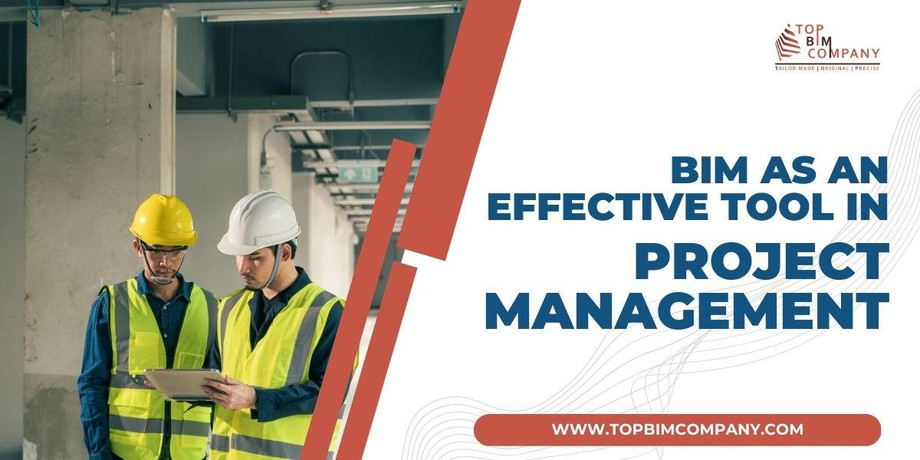The use of Building Information Modeling (BIM) is a phenomenon that has had a profound impact on project management in the AEC industry. BIM is a method for coordinating all stages of a project, from planning to construction to management. It is a useful tool that aids project managers in eliminating waste, minimizing mistakes, and maximizing output.
BIM model is a digital depiction of a structure's dimensions, features, and systems. A building's geometry, spatial relationships, geographical data, quantities, and property information are all stored in this intelligent model. Moreover, construction management with BIM facilitates real-time communication and data sharing throughout project teams.
Tools for Effective BIM Project Management
- BIM Coordination
BIM coordination is the process of integrating a building's architectural, structural, and MEP (Mechanical/HVAC, Electrical, Plumbing) services by addressing potential clashes. In order to guarantee that all parties involved in a project are working toward the same goal and that all models are coordinated and error-free, project managers can use BIM coordination. Errors, conflicts, and rework that add unnecessary time and money to a project are less likely with help of BIM coordination. Also, BIM project managers can keep the project on track and within budget with the help of BIM coordination.
- 4D BIM
4D BIM is a digital model of a building project that also incorporates its timeline. Including the project schedule in the BIM model allows managers to generate a virtual construction timeline that shows the full scope of the project's development in a logical and easily understood manner.
With 4D BIM, project managers can see where delays could occur and how they could be avoided, as well as optimize the construction sequence to save time and money. VDC Project managers can use 4D BIM to better manage the construction process and share information about the project's timeline with stakeholders.
- 5D BIM
5D BIM is a digital model of a building project that also includes information about its cost and quantity data. Project managers can acquire a comprehensive cost breakdown of a project's budget by combining cost and quantity data in the BIM model.
5D BIM cost management helps project managers visualize cost and quantity data, spot potential cost overruns, and optimize for savings. The budget for a project can be better communicated to stakeholders and managed with the help of 5D project management, which is used by project managers.
- Visualization
BIM enables project managers to have a better grasp of a project as well as an improved ability to envision it, beginning with the planning phase and continuing through the building phase. BIM and project management enable project managers to view the building prior to its construction, which enables them to spot any potential issues and discover solutions before the beginning of construction.
- Collaboration
BIM makes it possible for project managers to work together with various parties involved in the construction project, such as architects, engineers, contractors, and subcontractors. This collaboration helps to reduce the number of errors as well as disagreements that occur between the various teams. Additionally, it enables project managers to share information and updates in real time, which guarantees that everyone is working from the same page.
Advantages of BIM Project Management
- Improved collaboration among project stakeholders
- Improved control for project managers
- Quality assured final project
- Faster project delivery
- Cost-effective
- Reduce resource wasting
BIM apart from being a great tool of assistance in technical aspects of construction can also be used as an effective project management tool. The technical aspects of BIM For project management such as clash detection, 4D & 5D modeling, quantity takeoff, etc. can be very useful for construction management.
BIM 360 for Construction Project Management
BIM 360 is an all-inclusive cloud-based platform for managing building projects. It is a comprehensive set of resources that facilitates the management of every stage of a building project, from planning to building to maintenance. Tools for managing documentation, fields, and buildings are all part of BIM 360's toolset. The BIM 360 project management platform allows project BIM managers to view up to date information about their projects, engage in real time with their teams, and make choices based on the most recent information available.
Project managers can use BIM 360 construction management tool to oversee many jobs at once, maximizing efficiency and minimizing waste as they work to complete each project on schedule and on budget. As a whole, BIM 360 is an effective tool that can facilitate more efficient administration of building projects, cut down on wasteful mistakes and redos, and boost the quality of the final product.
Conclusion
BIM is an effective tool for project managers in the construction industry. BIM project management provides a comprehensive and collaborative approach to design, construction, and project management. The use of BIM in construction management helps project managers to streamline processes, reduce errors, improve efficiency, collaborate with stakeholders, optimize project aspects, and improve communication with clients. BIM is becoming increasingly popular in the construction industry, and project managers who use it are at an advantage in terms of project management.

